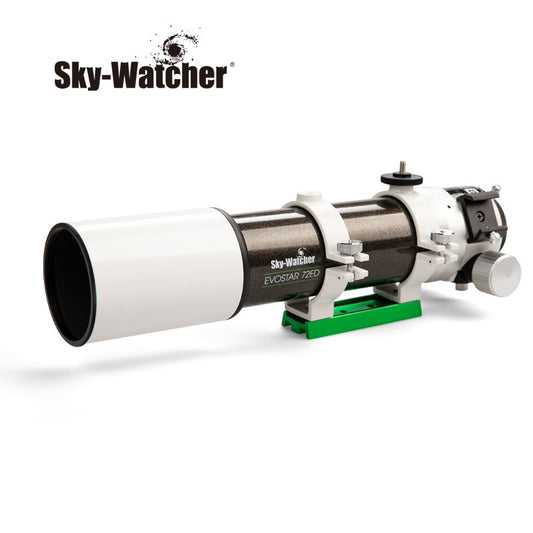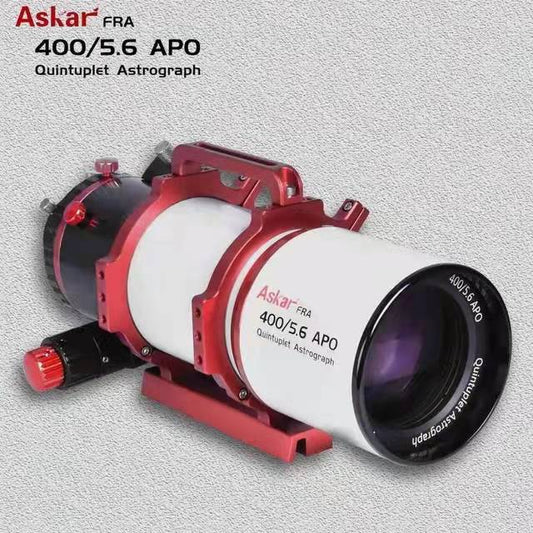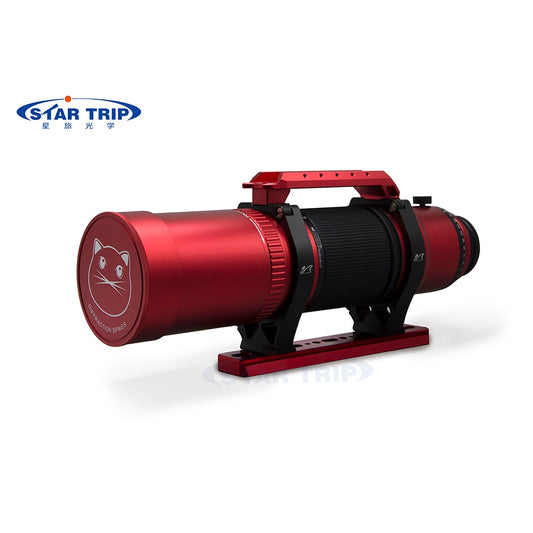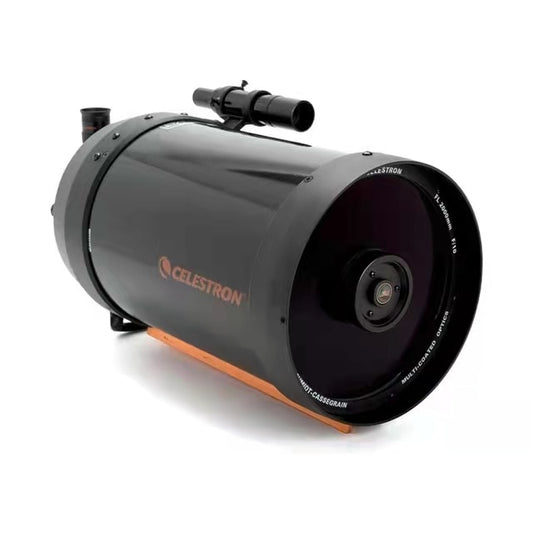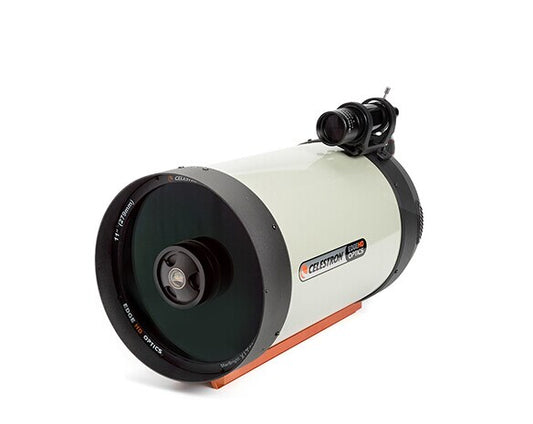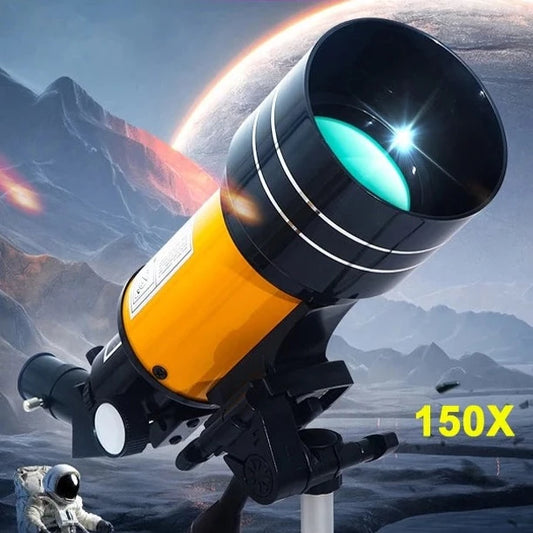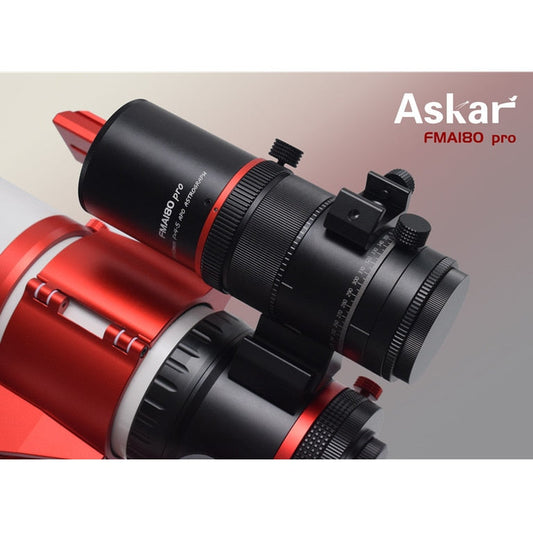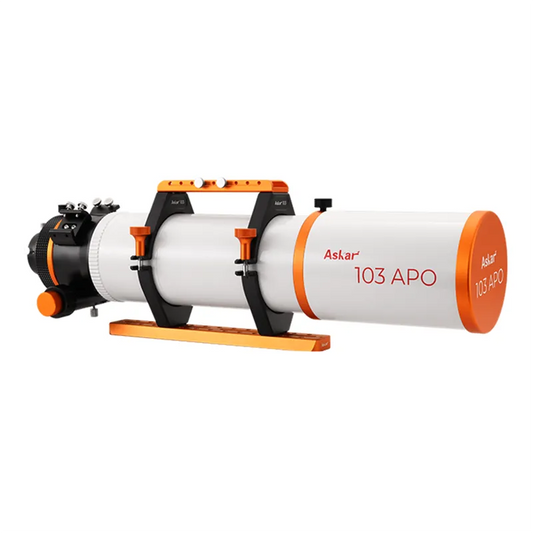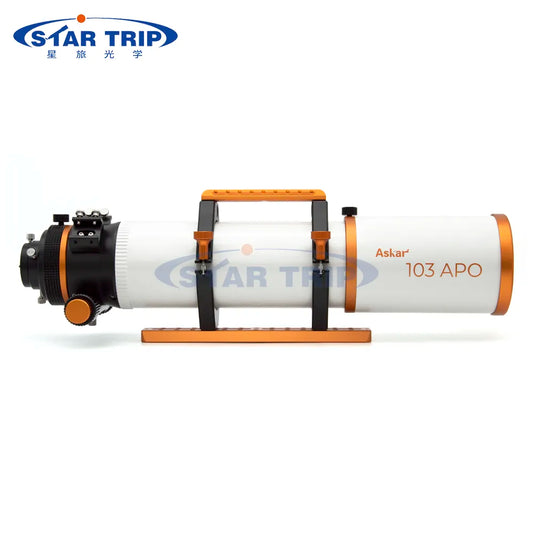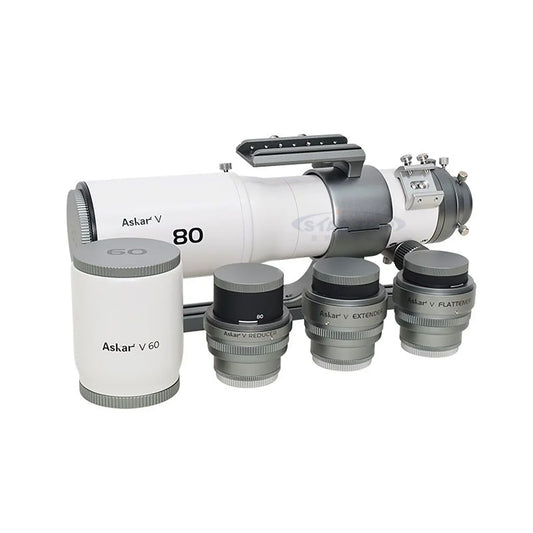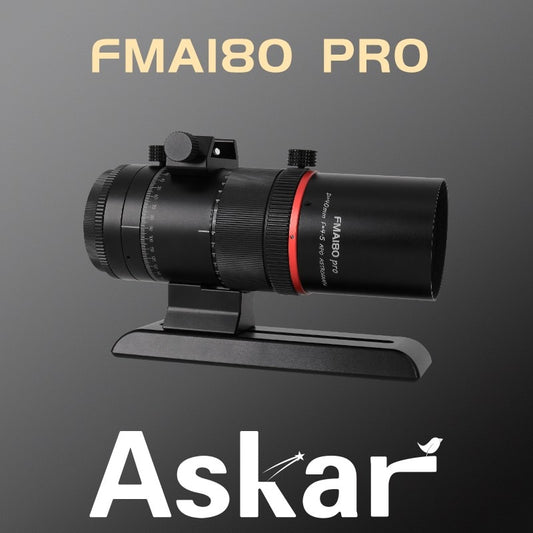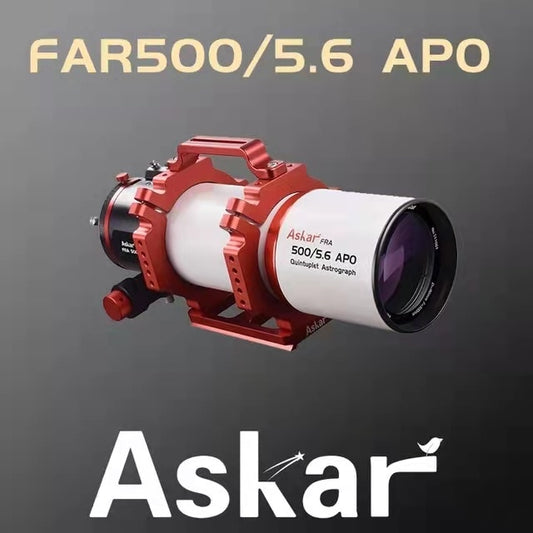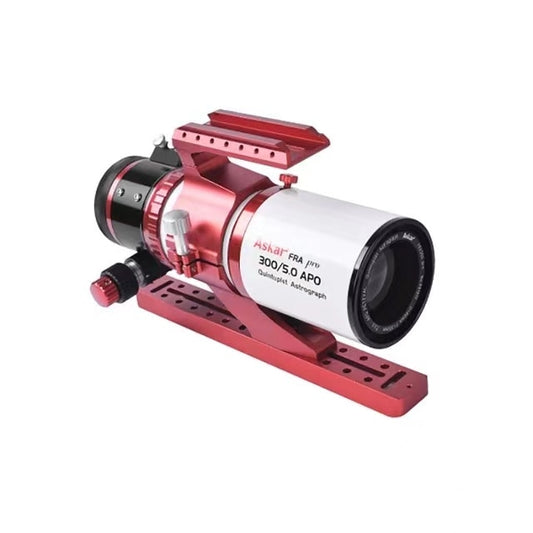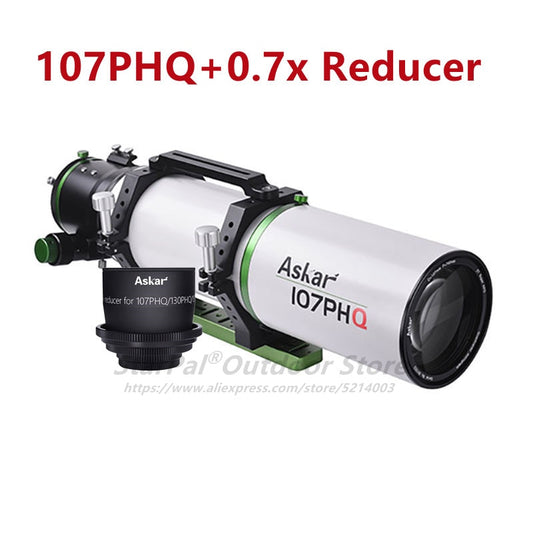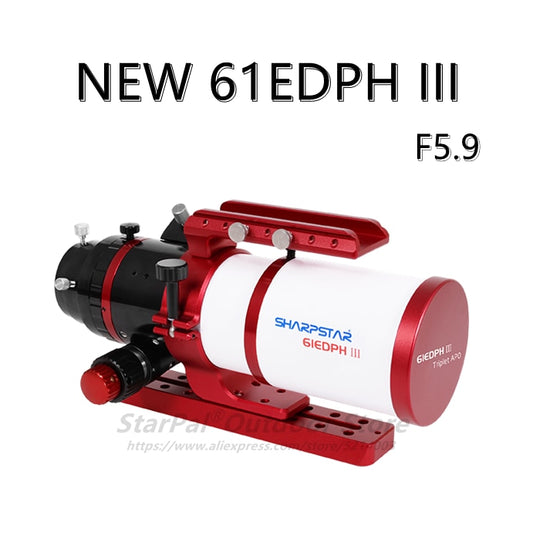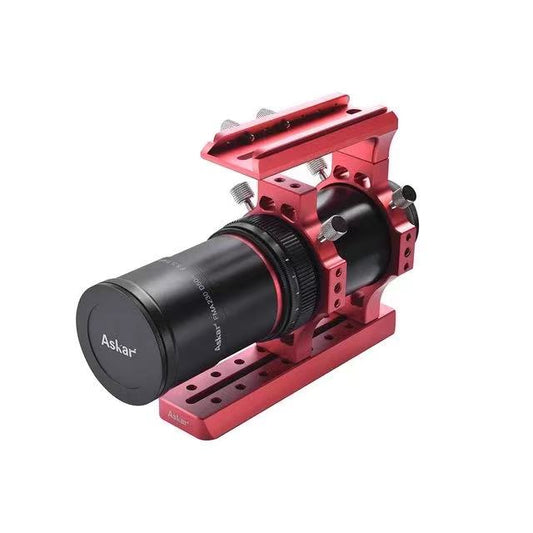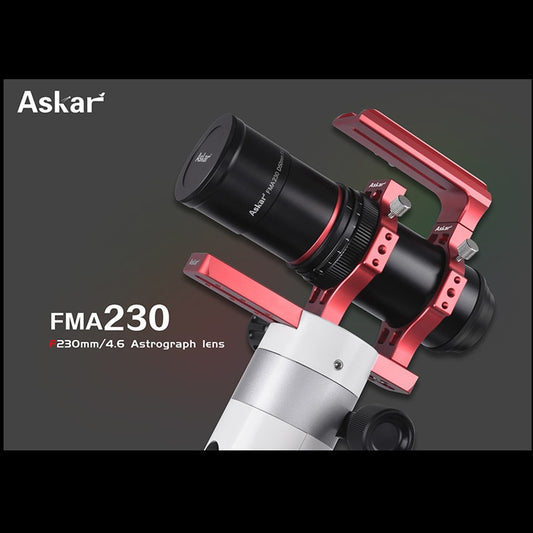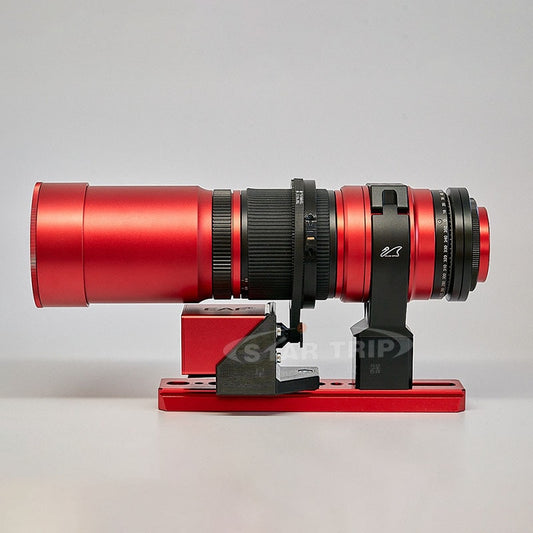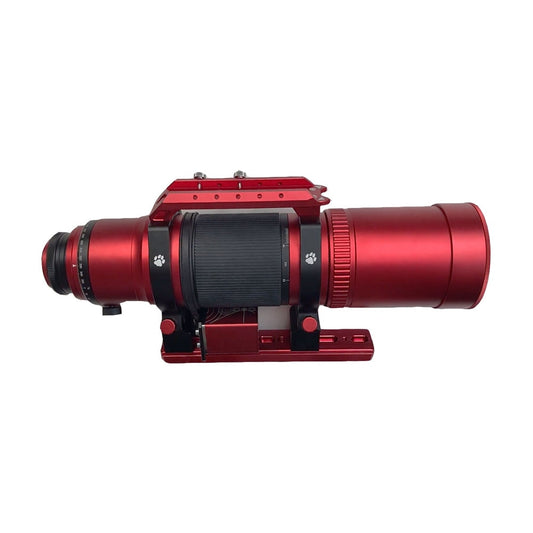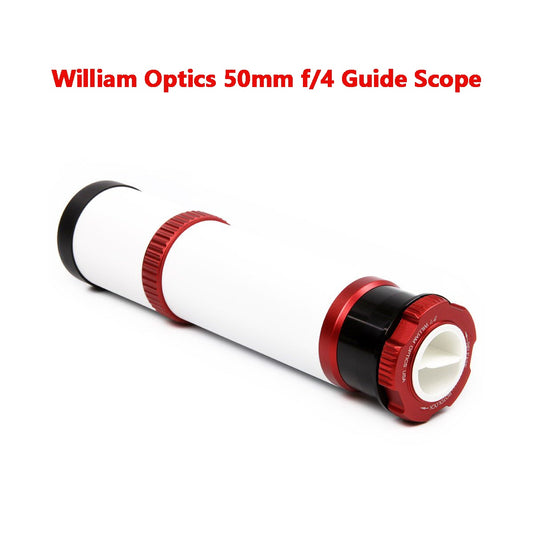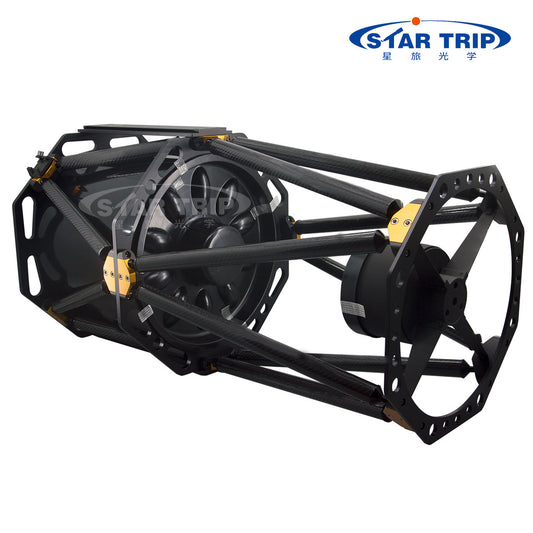When it comes to telescopes, one type that has gained popularity among astronomers and stargazers is the refractor telescope. These instruments have stood the test of time and continue to be widely used. In this article, we explore the reasons behind the popularity of refractor telescopes.
Clear and Crisp Images: Superior Optical Quality
One of the primary reasons refractor telescopes are popular is their ability to provide clear and crisp images. The design of a refractor telescope utilizes lenses to gather and focus light. As a result, the image quality is often superior, with minimal aberrations. Refractors produce sharp and high-contrast views of celestial objects, allowing astronomers to observe details with precision.
Low Maintenance: Sealed Optical Tube
Refractor telescopes have a sealed optical tube, which offers several advantages. Unlike reflector telescopes that use mirrors, refractors do not require regular cleaning or collimation. The sealed design protects the optics from dust, moisture, and other contaminants. This low-maintenance feature makes refractors an attractive choice for those who prefer hassle-free observing sessions.
Versatility and Portability: Compact Design
Refractor telescopes are known for their compact and lightweight design. The absence of complex mirror systems makes refractors more portable and easier to set up. This makes them a popular choice for astronomers who enjoy stargazing on the go or want a telescope that is easy to transport. Refractors are also versatile, allowing for terrestrial viewing and astrophotography in addition to celestial observations.
Durability and Longevity: Robust Construction
Refractor telescopes are typically built with sturdy and durable materials. The lenses are housed in a robust tube, which provides protection and stability. Refractors are less susceptible to misalignment or damage during transportation compared to other telescope types. With proper care and maintenance, a refractor telescope can last for many years, making it a reliable investment for amateur and professional astronomers alike.
Less Sensitive to Ambient Light: Ideal for Urban Observing
Another advantage of refractor telescopes is their ability to handle light pollution. The optical design of refractors makes them less sensitive to ambient light, allowing astronomers to observe celestial objects even in urban or light-polluted areas. This makes refractors a preferred choice for those living in cities or areas with significant light pollution, as they can still enjoy astronomy without the need for extensive travel.
Wide Range of Aperture Options: Meeting Various Needs
Refractor telescopes come in a wide range of aperture options, catering to different needs and preferences. Whether you're a beginner or an advanced observer, refractors offer a variety of choices to suit your specific requirements. From smaller, portable refractors with apertures of a few inches to larger, professional-grade models with apertures of several inches or more, there is a refractor telescope for every level of expertise and budget.
Excellent for Planetary and Lunar Observations
Due to their superior image quality and minimal chromatic aberration, refractor telescopes are particularly well-suited for observing planets and the Moon. The high contrast and sharpness provided by refractors allow astronomers to discern intricate details on the surfaces of celestial bodies. If your primary interest lies in studying the features of planets or exploring lunar landscapes, a refractor telescope will provide you with exceptional views.
Ideal for Astrophotography: Precise and Sharp Images
Refractor telescopes are highly regarded in the field of astrophotography. The precise focusing capability and superior image quality make refractors a popular choice among astrophotographers. With their well-corrected optics and minimal distortion, refractors produce sharp and detailed images, enabling photographers to capture stunning photos of galaxies, nebulae, star clusters, and other deep-sky objects. The versatility of refractors also allows for capturing wide-field views of the night sky.
Less Susceptible to Collimation Issues: Reliable Performance
Unlike reflector telescopes that require periodic collimation (alignment of mirrors), refractor telescopes are relatively immune to collimation issues. The sealed optical tube and fixed lens configuration of refractors ensure that the alignment remains stable over time. This feature eliminates the need for frequent adjustments and provides consistent and reliable performance, allowing astronomers to spend more time observing and less time fine-tuning their telescope's optics.
Minimal Maintenance: Long-Term Convenience
Refractor telescopes are known for their low-maintenance nature. With no mirrors to clean or collimate, refractors require minimal upkeep. This convenience is particularly appealing to beginners or individuals who prefer a straightforward observing experience without the need for technical adjustments. Owning a refractor telescope allows you to spend more time enjoying the wonders of the night sky and less time on maintenance tasks.
Affordable Entry-Level Options: Accessible for Beginners
Another reason for the popularity of refractor telescopes is the availability of affordable entry-level options. Many manufacturers offer budget-friendly refractor models that are perfect for beginners or those just starting their journey into astronomy. These telescopes provide an excellent introduction to stargazing without breaking the bank. With a reasonable investment, beginners can enjoy the benefits of a refractor telescope and explore the wonders of the night sky.
Low Maintenance Viewing Experience: Ready to Use
Refractor telescopes provide a hassle-free viewing experience with minimal maintenance requirements. Unlike other telescope types that may require regular collimation or adjustments, refractors are typically ready to use straight out of the box. With their sealed optical tubes and robust construction, refractors are less prone to misalignment or degradation over time. This aspect makes them an attractive choice for those who prefer a straightforward and convenient observing experience.
Versatility in Terrestrial Observations: Dual-purpose Functionality
In addition to their astronomical capabilities, refractor telescopes also excel in terrestrial observations. The sharp and clear images produced by refractors make them ideal for activities such as bird-watching, wildlife observation, or scenic landscape viewing. This dual-purpose functionality adds to the appeal of refractor telescopes, as users can explore both the celestial and terrestrial realms with a single instrument.
Less Susceptible to Dew and Frost: Ideal for Humid Climates
Refractor telescopes have an advantage over other telescope types in humid or cold climates. Due to their sealed tube design, refractors are less susceptible to dew and frost formation on the optics. This feature allows for more extended observing sessions without the need for constant dew control measures. It is particularly beneficial for astronomers residing in regions with high humidity or colder environments.
Historical Significance and Aesthetics: Nostalgic Appeal
Refractor telescopes have a rich history and carry a sense of nostalgia. The classic design and timeless appeal of refractors evoke a connection to the early days of astronomy. Many astronomers and enthusiasts appreciate the aesthetics and historical significance associated with refractor telescopes, adding to their enduring popularity.
Continued Advancements in Refractor Telescope Technology: Staying Relevant
Refractor telescopes have not remained stagnant in their popularity; they have continued to evolve and stay relevant in the ever-advancing field of astronomy. Manufacturers and researchers have been making advancements to enhance the capabilities and performance of refractor telescopes, ensuring their continued appeal to astronomers and enthusiasts.
Apochromatic Refractors: Minimizing Chromatic Aberration
One significant development in refractor telescope technology is the introduction of apochromatic (APO) refractors. Apochromatic lenses are designed to minimize chromatic aberration, which is a common issue in standard refractors that causes color fringing around bright objects. APO refractors utilize multiple lens elements of different glass types to correct for chromatic aberration, resulting in sharper and more color-accurate images. This advancement has made refractors even more attractive for astrophotography and high-resolution observations.
Improved Coatings and Glass Technology: Enhanced Light Transmission
Coating technology has also improved over the years, leading to increased light transmission in refractor telescopes. Anti-reflective coatings are applied to lens surfaces to minimize light loss and improve image contrast. The advancements in glass technology have allowed for the production of lenses with better optical properties, further enhancing the image quality and reducing unwanted optical artifacts.
Hybrid Refractor Designs: Combining Benefits of Different Telescopes
In recent years, hybrid designs have emerged that combine the benefits of refractor telescopes with other telescope types. For example, some refractors incorporate a corrector plate or field flattener to reduce field curvature and improve image sharpness across the entire field of view. These hybrid designs offer the best of both worlds, providing the clarity and crispness of refractors along with improved field flatness.
Compact and Travel-Friendly Options: Meeting Modern Needs
As the demand for portable and travel-friendly equipment increases, manufacturers have responded by creating compact and lightweight refractor telescopes. These instruments are designed for easy transportation and setup, making them ideal for astronomers on the go. Whether you're attending star parties, going on astrophotography expeditions, or simply observing from different locations, the availability of compact refractor options allows for convenient and enjoyable stargazing experiences.
Integration with Go-To Mounts and Computerized Systems: Streamlining Observations
Refractor telescopes are often paired with computerized Go-To mounts and integrated with advanced tracking and guiding systems. These technological integrations streamline the process of locating and tracking celestial objects, making observations more accessible, accurate, and enjoyable. With the assistance of computerized systems, users can navigate the night sky with ease, maximizing their observing time and enhancing their overall experience.
Conclusion
Refractor telescopes have earned their popularity due to several key factors. Their ability to provide clear and sharp images, low-maintenance requirements, compact design, durability, and versatility make them a preferred choice for many astronomers. Whether you are a beginner or an experienced observer, a refractor telescope can offer you an enjoyable and rewarding viewing experience. Consider the unique features and benefits of refractors when choosing your next telescope for exploring the wonders of the night sky.
More Telescope Topics:
- Who Invented The Telescope?
- Why are Telescopes Important?
- When was The Telescope Invented?
- Best Deep Sky Objects by Month
- Best Telescope for Viewing Planets and Galaxies
- Best Telescope to See Planets and Galaxies
- Best Telescope Eyepiece for Viewing Planets
- Reflector Vs Refractor Telescope
- William Optics Redcat 51
- Takahashi Telescopes
- Brightest Objects in the Night Sky
- What Does a Focal Reducer Do on a Telescope
- Ax Telescope Mount
- Types of Telescopes
- Telescope Mounts Explained
- What is a Catadioptric Telescope
- Telescope Aperture
- How Does a Telescope Work
- Are There Telescopes for Smartphone Camera
- How Much Does a Telescope Cost
- Best Telescopes Under $1000
- What Makes a Good Telescope
- What Does a Focal Reducer Do
- Stellarium
- Bahtinov Mask
- Qhyccd Polemaster Review



